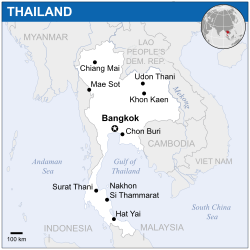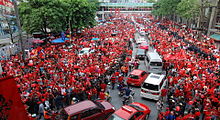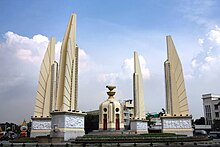

![Location of Thailand (green)in ASEAN (dark grey) – [Legend]](http://upload.wikimedia.org/wikipedia/commons/thumb/b/b8/Location_Thailand_ASEAN.svg/250px-Location_Thailand_ASEAN.svg.png)

![]() listen)), officially the Kingdom of Thailand (Thai: ราชอาณาจักรไทย, RTGS: Ratcha-anachak Thai [râːtt͡ɕʰaʔaːnaːt͡ɕàk tʰaj] (
listen)), officially the Kingdom of Thailand (Thai: ราชอาณาจักรไทย, RTGS: Ratcha-anachak Thai [râːtt͡ɕʰaʔaːnaːt͡ɕàk tʰaj] (![]() listen), Chinese: 泰国), formerly known as Siam (Thai: สยาม, RTGS: Sayam [sajǎːm]), is a country at the centre of the Indochinese peninsula in Southeast Asia.
listen), Chinese: 泰国), formerly known as Siam (Thai: สยาม, RTGS: Sayam [sajǎːm]), is a country at the centre of the Indochinese peninsula in Southeast Asia.









